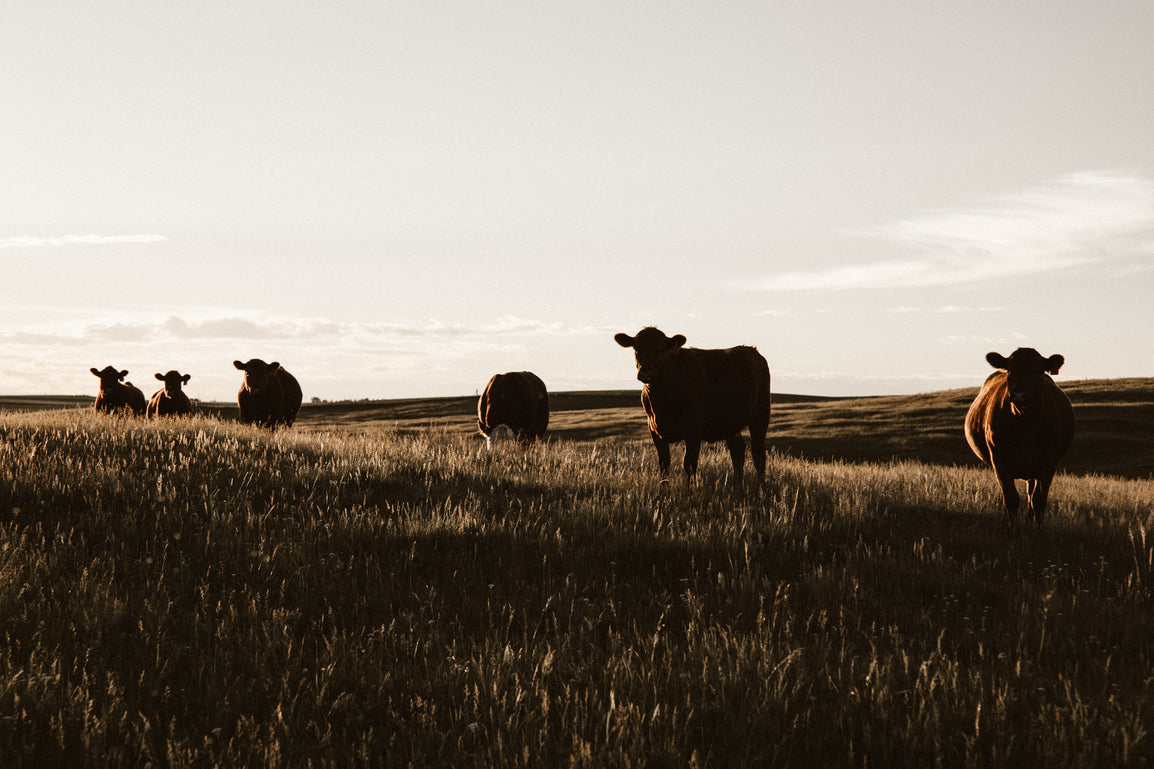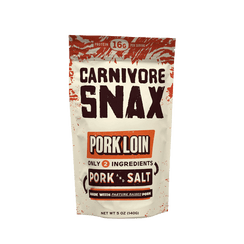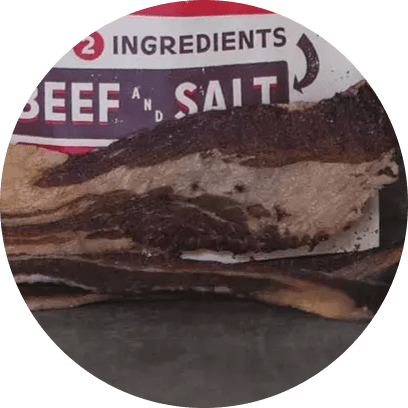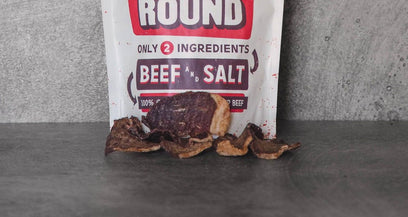THE CARNIVORE DIET BENEFITS




As you lift the fresh, vibrant produce from your shopping basket, or when you sink your teeth into a succulent, naturally-raised steak, have you ever stopped to consider the journey your food has taken?
From seed or calf to your plate, the path of agriculture is both complex and deeply impactful. The conversation surrounding our food's journey has evolved over the years, with a particular focus shifting towards sustainability and health - both for our lands and ourselves.
This focus has brought a relatively new agricultural concept into the limelight: regenerative agriculture. It promises to address many of the challenges traditional farming has posed to our environment, but like any innovative practice, it isn't without its critics and challenges.
That’s why in this article, we'll delve into the pros and cons of regenerative agriculture, examining its potential benefits, drawbacks, and implications for the future of farming.
We'll strive to paint a balanced picture of this emerging approach and help you understand how you, as a consumer, can shape the course of agriculture's evolution. Let’s start with a quick introduction for those who are just discovering the world of regenerative farming.
A Brief Introduction to Regenerative Farming
First things first - what is regenerative agriculture? Simply put, it’s the future of farming. It’s built upon a system of farming principles and techniques that strives to rehabilitate and enrich the entire ecosystem of the farm. It's not just about sustainability. It goes beyond that, seeking to build upon the resources it uses, rather than depleting them.
So, how does regenerative agriculture work? The key to understanding regenerative agriculture is to see it as a holistic system. It's not just about what happens in the fields. It considers the entire farm ecosystem.
This includes the soil, water, plants, animals, and even the local climate. The central aim is to restore, maintain, and enhance the ecological harmony within the farm.
Under regenerative agriculture, soil health is prioritized above all. After all, healthy soil is the foundation of a productive farm and, by extension, a secure food system.
By increasing organic matter in the soil through practices such as cover cropping, crop rotation, and reduced tillage, regenerative agriculture enhances the soil's ability to retain water, sequester carbon, and support diverse microbial life.
It also advocates for the integration of livestock into farming systems, using animals to naturally enrich the soil, control pests, and promote biodiversity.
This is in stark contrast to the concentrated animal feeding operations (CAFOs) prevalent in conventional farming systems, which are often criticized for their environmental and animal welfare issues.
However, while regenerative agriculture sounds promising, it is not without its complexities and challenges. To fully understand its impact, it's important to delve deeper into the pros and cons of regenerative agriculture below.
The Pros and Cons of Regenerative Agriculture Explained
Just like any farming system, regenerative agriculture has its benefits and drawbacks. As we delve into the pros and cons of regenerative agriculture, we will aim to provide a comprehensive and balanced overview, which will equip you with the knowledge to make informed decisions about the future of our food system.
Pros of Regenerative Agriculture
Let’s make one thing clear right away: the benefits of regenerative agriculture are profound and plentiful. The truth is that they greatly outweigh and potential drawbacks, which you’ll discover shortly. That being said, let’s start with where the entire focus of regenerative farming lies: in the soil.
Improved Soil Health and Productivity
First and foremost, regenerative agriculture is a boon to soil health. Through practices like cover cropping, reduced tillage, and the application of organic compost, the organic matter content of the soil increases.
Organic matter plays a crucial role in soil health by improving its structure, water-holding capacity, and fertility. Moreover, healthier soil teems with microbial life, fostering a symbiotic relationship between the soil and plant roots, enhancing nutrient absorption, and promoting plant health.
Enhanced Biodiversity
While healthier soil is the star of the show, the improvements to bioavailability are critical in their own right. As such, we explored this topic in-depth in our recent breakdown of regenerative agriculture biodiversity.
Regenerative farming promotes biodiversity at all levels - from the microorganisms in the soil to the plants and animals that inhabit the farm. By integrating livestock and rotating crops, farmers can mimic natural ecosystems, which helps to break pest cycles, reducing the need for harmful pesticides.
Moreover, a more biodiverse farm is a more resilient farm, capable of withstanding pests, diseases, and weather extremes. We’ll touch on this a bit more later on, as its worth exploring in greater detail.
Restores Our Lands
Many of the world's grasslands and forests have been severely degraded due to overgrazing and deforestation.
Regenerative agriculture offers a way to restore these ecosystems. By managing livestock in a way that mimics natural grazing patterns, farmers can actually stimulate plant growth, restore soil health, and sequesters carbon, helping to bring these degraded landscapes back to life.
Better for Farmers
By reducing reliance on synthetic pesticides and fertilizers, farmers lower their exposure to these potentially harmful chemicals. Long-term exposure to certain agricultural chemicals can lead to a variety of health issues, ranging from skin and eye irritation to more serious conditions like respiratory problems, endocrine disruption, and even cancer.
In addition to physical health, regenerative agriculture also contributes to improved mental wellbeing. Farming is a notoriously stressful profession, with factors like unpredictable weather, fluctuating prices, and challenging work conditions taking a toll on farmers' mental health.
Regenerative farming, with its focus on working with nature rather than against it, can offer a more rewarding, less stressful approach to farming. It also fosters a deep sense of stewardship and connection with the land, which can be deeply fulfilling.
But, farming is a business. And all businesses must be focused on profits - so, is regenerative farming profitable? It sure is!
By enhancing soil health and farm biodiversity, farmers can reduce their reliance on costly synthetic fertilizers and pesticides. That means costs are lower, while yield only falls off marginally.
And, by diversifying their crops and income streams, farmers are not solely dependent on a single crop or livestock product. This diversity can provide a buffer against market fluctuations and crop failures, leading to a more stable income and less financial stress.
Healthier for Livestock
Regenerative agriculture often incorporates rotational grazing, where livestock are moved frequently to fresh pasture. This practice mimics the natural behavior of herd animals and is far healthier for the livestock than confinement in feedlots.
Animals on regenerative farms tend to be healthier, require fewer antibiotics, and produce higher-quality meat and dairy products. This is something you can learn more about in our guide to regenerative cattle farming.
More Resilient Food Supply Chain
By increasing the resilience of individual farms, regenerative agriculture strengthens the entire food supply chain. Farms that follow regenerative practices are more capable of weathering droughts, floods, pests, and diseases. In an era of increasing weather volatility, this resilience is crucial for ensuring a secure food supply.
Superior Food for Consumers
Lastly, and perhaps most importantly, regenerative agriculture is better for us as consumers. Foods produced on regenerative farms are often higher in nutrients and devoid of the synthetic pesticide residues that can be found on conventionally-grown produce.
Not to mention, by supporting regenerative agriculture, consumers can take an active role in promoting a more sustainable and resilient food system. We’ll talk more about how to support regenerative agriculture as a consumer later. But at this point, it’s time we evaluated the other side of the coin: the cons of regenerative farming.
Cons of Regenerative Agriculture
While there are many potential benefits to regenerative agriculture, it is essential to recognize that there can be challenges and limitations as well.
However, it is important to remember that while these are valid concerns, many of them are obstacles that can be overcome with time, research, and policy changes.
Initial Transition Challenges
As we showed in our guide on how to do regenerative agriculture, transitioning from conventional farming methods to regenerative practices can be a daunting task.
It often requires a complete overhaul of existing systems, significant time investment, and possibly some short-term economic sacrifices. For example, perennials and cover crops, which are key to building soil health, can take several years to establish and begin returning a profit.
Also, there's a learning curve involved as farmers need to develop a deep understanding of the local ecosystem, learn new techniques and, often, unlearn some conventional practices.
It's a process that requires patience, persistence, and a willingness to take on a certain degree of risk. And, in saying that, we must also say that all of this is worth it for the reasons we described above in the “pros of regenerative agriculture”.
Market and Policy Limitations
Current market structures and agricultural policies are often geared towards conventional farming systems, making it difficult for regenerative farmers to compete on a level playing field. These farmers can face challenges finding markets for their diversified products, getting fair prices for their goods, or even accessing necessary resources and support.
Furthermore, agricultural policies at national and international levels often favor large-scale, industrial agriculture, providing subsidies and support that are not always available to smaller, regenerative farms. This policy bias can create economic barriers to farmers wishing to transition to more sustainable practices.
Does One Outweigh the Other?
After unpacking the pros and cons of regenerative agriculture, you can likely see that one of these outweighs the other. But, it's important to consider the broader farming landscape before we close this conversation out.
First, note that we're comparing the benefits and challenges of regenerative agriculture against those of more traditional or industrial farming methods, which currently dominate our food systems.
While traditional agriculture might seem advantageous due to its established presence in market and policy frameworks and short-term economic efficiencies, it's vital to consider the long-term perspective.
Regenerative agriculture, despite its transition challenges and current market limitations, brings a host of substantial benefits. These include improved soil health, enhanced biodiversity, and a more resilient food supply chain, to name a few. These benefits play a crucial role in environmental preservation, farmer wellbeing, animal health, and the delivery of high-quality food to consumers.
So, when we weigh these aspects, the pros of regenerative agriculture, in our view, significantly outweigh the cons. The challenges it faces are largely systemic and transitional - factors that can change with shifts in policy, market dynamics, and widespread adoption.
In contrast, the benefits it offers are long-term and foundational, addressing many of the environmental and sustainability issues inherent in industrial agriculture.
Adopting regenerative agriculture is not merely a shift in farming techniques. It's a profound change in how we view and interact with the land, our food, and the entire ecosystem. The value of this paradigm shift, we believe, far exceeds the hurdles we might encounter in the transition.
Knowing the Regenerative Agriculture Pros and Cons, How Can You Show Support for the Future of Farming?
As a consumer, your choices have tremendous power. Every dollar you spend is a vote cast for the type of world you want to live in. And when it comes to agriculture, this power cannot be understated.
By choosing products sourced from regenerative agriculture, you’re supporting a farming system that puts the health of the planet, the welfare of animals, and the wellbeing of farmers at its core.
But where do you find such products? Look no further than our own Carnivore Chips. We proudly source all our meat from farms that practice regenerative agriculture. We’ve done the legwork to ensure that every delicious snack you enjoy from us supports farms that prioritize soil health, biodiversity, and animal welfare.
When you choose our meat chips, you're not only nourishing your body with high-quality, nutrient-dense food, but you're also playing a vital part in driving the change toward more sustainable, ethical farming practices.
Your support sends a clear message to the market: you value the health of our planet and the ethical treatment of livestock. So, whether you’re on keto vs carnivore or simply trying to eat a high protein diet, get the best low carb snack today:
Along with treating yourself to our carnivore snacks, you can follow these tips for making your voice heard and putting your money where your mouth is:
- Educate Yourself and Others: Continue to educate yourself about regenerative agriculture and its benefits. Share what you learn with friends and family. The more people know about these practices, the greater the demand for regeneratively farmed products will be.
- Support Local Farmers: If possible, buy directly from local farmers who employ regenerative practices. They may sell their products at local farmers' markets, farm stands, or through Community Supported Agriculture (CSA) programs. This not only helps the farmers but also reduces the carbon footprint associated with transporting food over long distances.
- Advocate for Policies Supporting Regenerative Agriculture: Reach out to your local and national representatives and encourage them to support policies and legislation that aid regenerative farming practices. The more voices they hear, the more likely they are to take action.
Final Thoughts on the Pros and Cons of Regenerative Agriculture
In weighing the pros and cons of regenerative agriculture, it's clear that despite some challenges, this method of farming holds great potential for our planet's future.
It's an approach that integrates respect for nature, the welfare of animals, the wellbeing of farmers, and the health of consumers. This holistic model of farming is not just a method, but a philosophy - one that respects our interconnectedness with nature.
As consumers, we have a significant role to play in promoting this change. By educating ourselves, making conscious purchasing decisions, supporting our local farmers, and advocating for supportive policies, we can help shift the agricultural paradigm towards more sustainable, ethical practices.
As we move forward, let us remember the wisdom encapsulated in the saying, 'We do not inherit the earth from our ancestors; we borrow it from our children'.
With this in mind, let's ensure we return it in better shape than we found it. It starts with your support of regenerative farming - you hold more power as a consumer than you may realize!

























